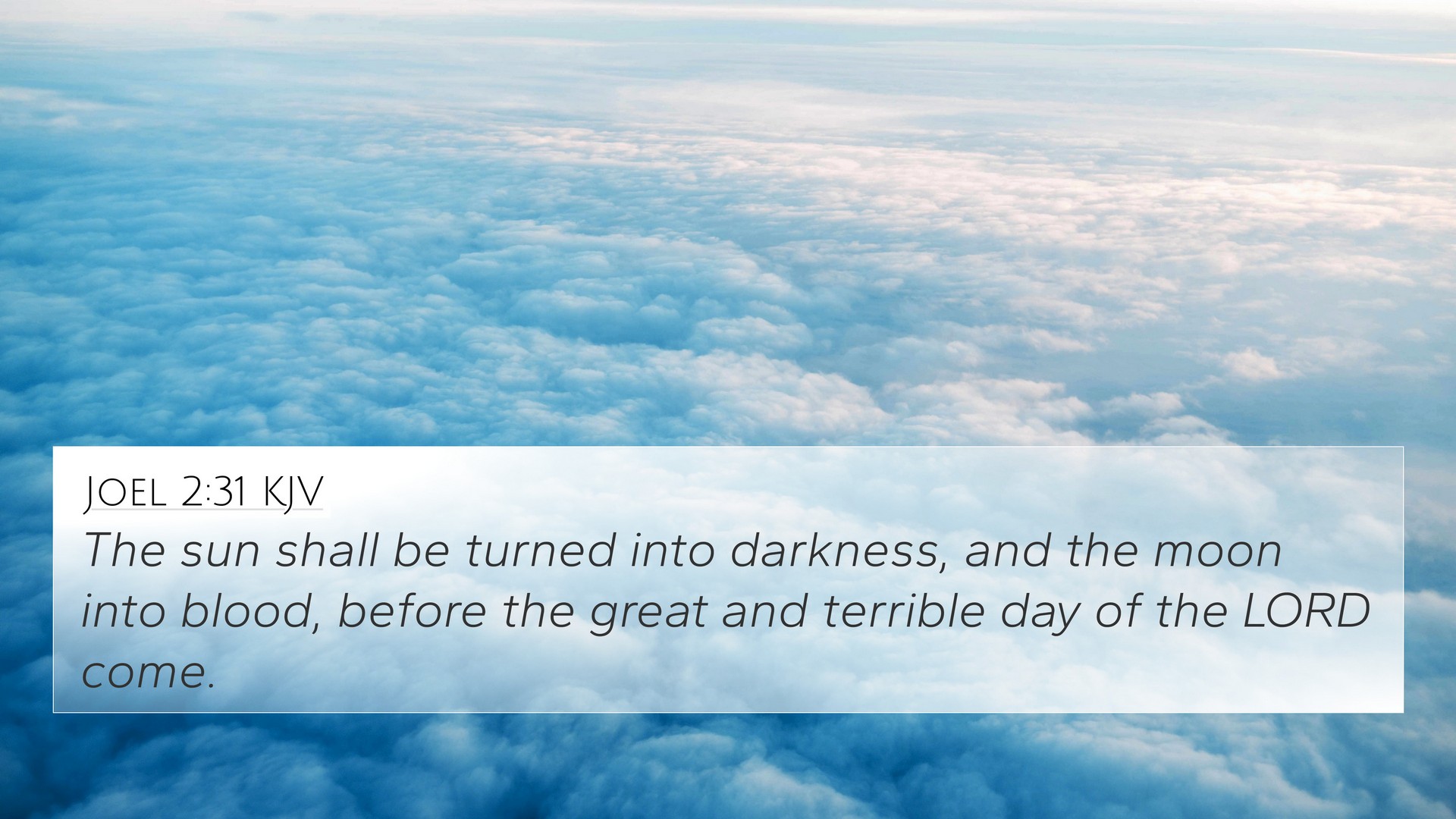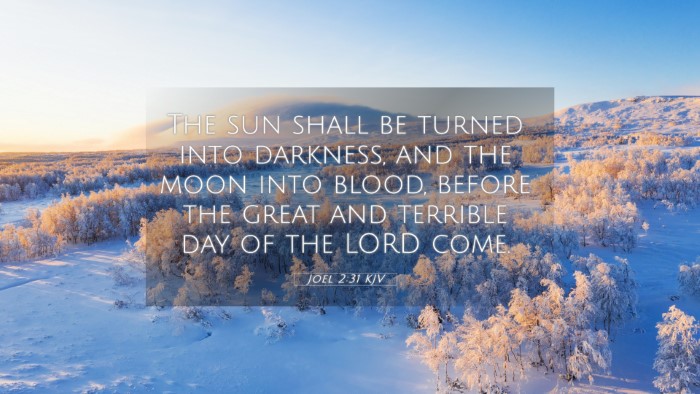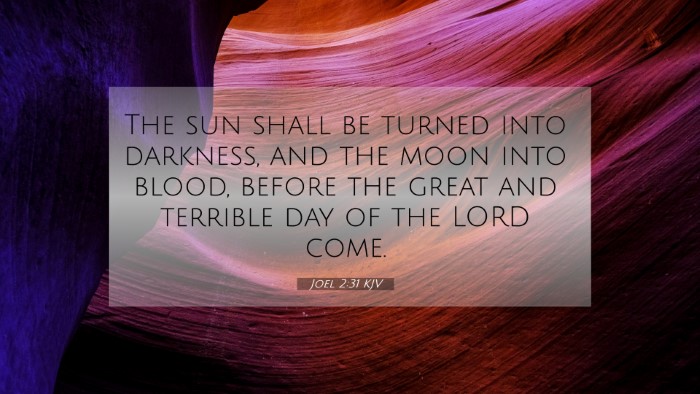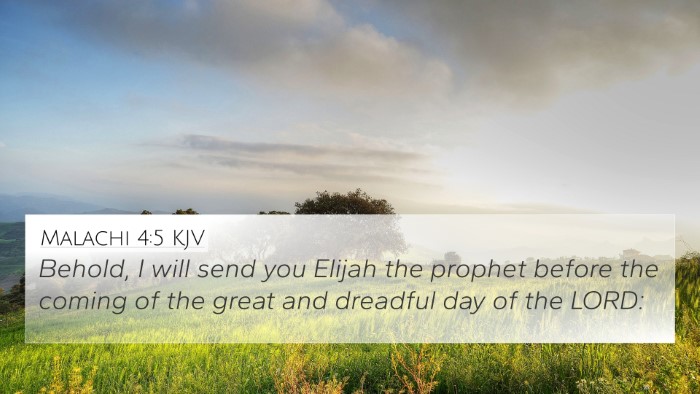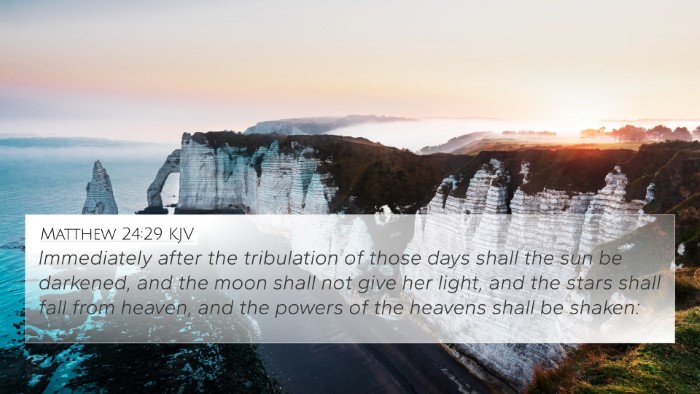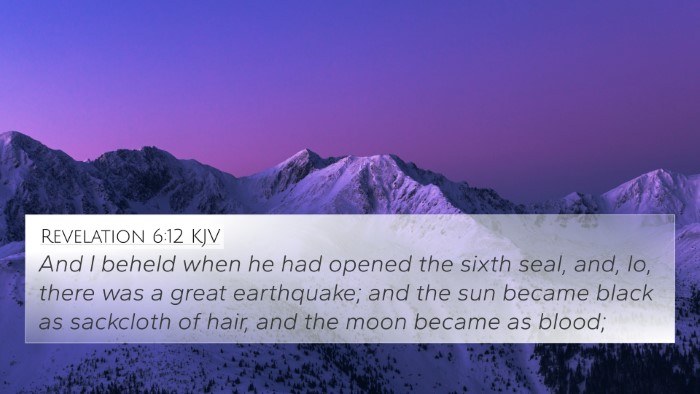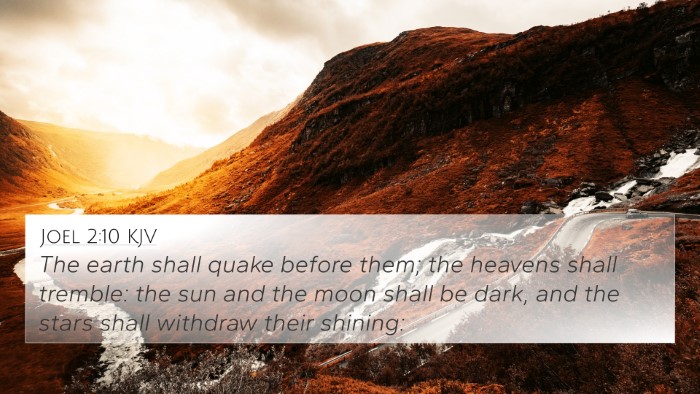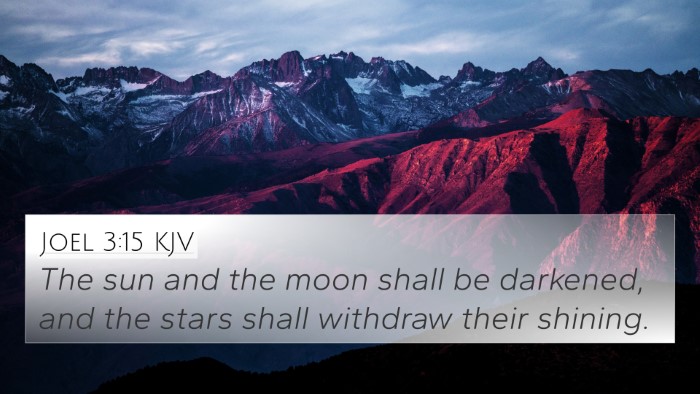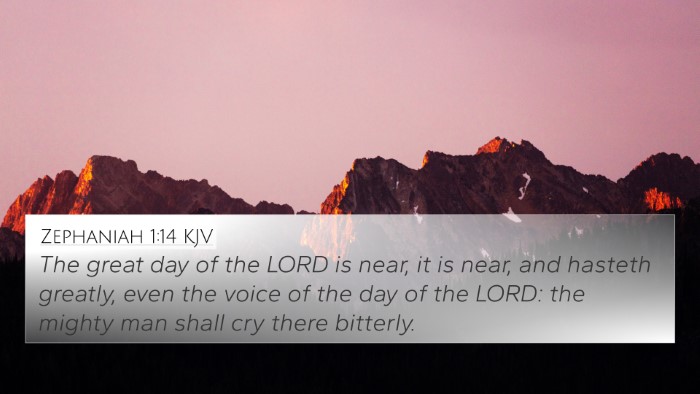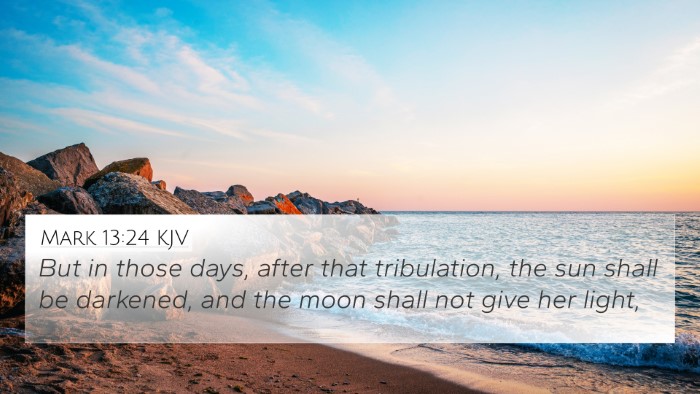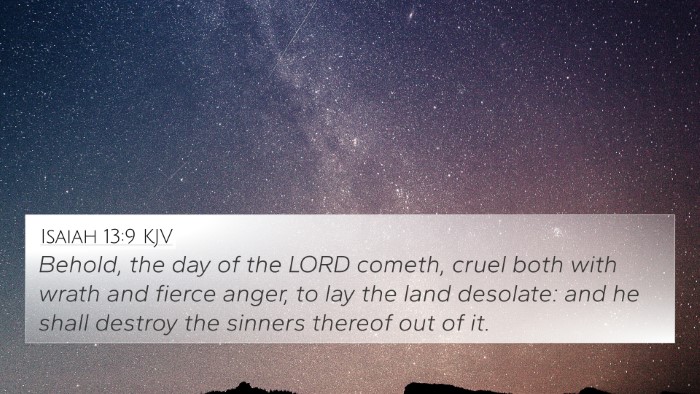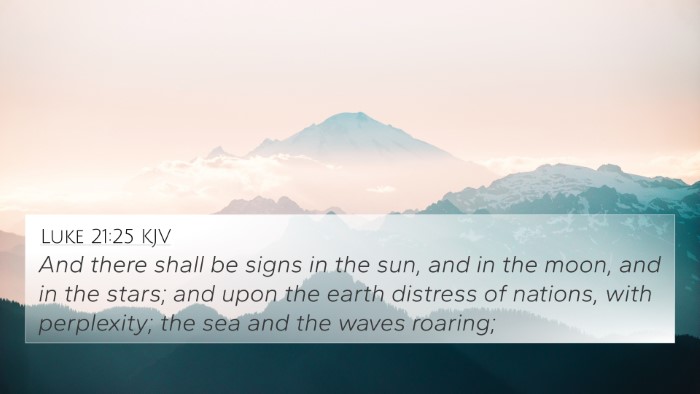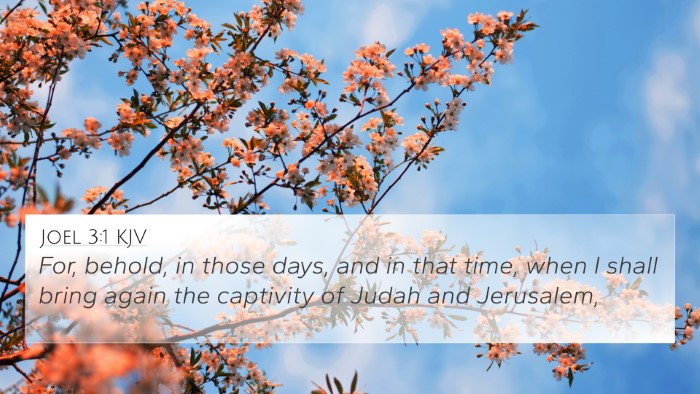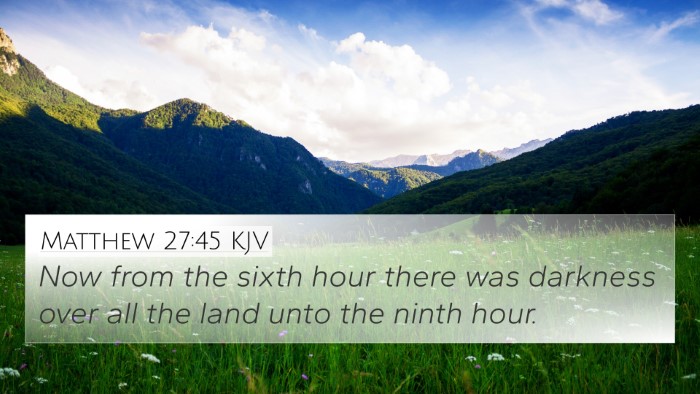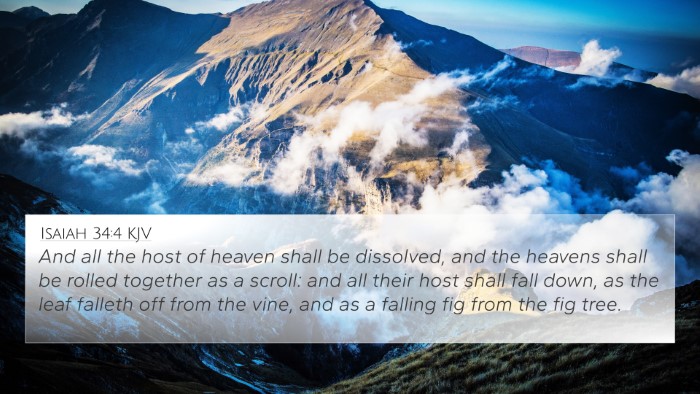Understanding Joel 2:31
Joel 2:31 states: "The sun shall be turned into darkness, and the moon into blood, before the great and terrible day of the Lord comes." This verse speaks of significant cosmic changes that would occur as heralds of the coming Day of the Lord. Let's delve into its meaning and connections with other scripture.
Verse Meaning and Interpretation
The imagery used in Joel 2:31 highlights a divine intervention in the natural order, which signifies both judgment and transformation. It emphasizes the gravity of the events leading up to the Day of the Lord, an important theme throughout the prophetic literature.
Insights from Commentaries
Matthew Henry elucidates that this prophecy signifies not only a physical alteration of the celestial bodies, but also a profound spiritual significance. The sun turning to darkness and moon to blood symbolizes the turmoil and distress that precede God's ultimate justice and the establishment of His kingdom.
Albert Barnes provides further understanding by linking this cosmic imagery to the signs of the end times. He notes that these changes serve as warnings for humanity, urging repentance and a return to God. The "great and terrible day of the Lord" is a pivotal moment that demands serious reflection.
Adam Clarke elaborates on the "great and terrible day" as a time when God’s judgment will be fully realized. He highlights the importance of being prepared for this day, as it will bring about both destruction for the unrepentant and hope for those who seek the Lord.
Connections to Other Bible Verses
Joel 2:31 is intrinsically linked to several other verses in both the Old and New Testaments, revealing thematic continuities in biblical prophecy. Here are some significant cross-references:
- Acts 2:20: This verse quotes Joel and refers to the outpouring of the Spirit at Pentecost, reinforcing the anticipation of the Day of the Lord.
- Matthew 24:29: Here, Jesus speaks of the darkening of heavenly bodies, echoing Joel’s prophetic words about the signs of the end times.
- Revelation 6:12-13: Discusses similar cosmic disturbances, portraying the judgment that precedes God's final intervention.
- Isaiah 13:10: Describes the sun being darkened, linking Joel’s message to the broader prophetic tradition that speaks of God's impending judgment.
- Micah 1:4: Communicates imagery of the earth melting under divine judgment, paralleling Joel’s theme of cosmic upheaval.
- Zephaniah 1:15: Depicts the day of the Lord as a day of wrath, which aligns with the warnings given in Joel.
- Revelation 8:12: This verse discusses the darkening of a third of the sun, connecting the celestial signs to the unfolding of eschatological events.
Thematic Connections
Joel 2:31 contributes to several key themes in the Bible, such as:
- Divine Judgment: The verse underscores the seriousness of God's judgment against sin and the call for repentance.
- Hope and Restoration: While it speaks of darkness and blood, it ultimately points toward God's promise of restoration for His people.
- Preparation for the Day of the Lord: The imagery encourages believers to be vigilant and ready for the return of Christ.
Tools for Cross-Referencing
To deepen your understanding of Joel 2:31 and its connections within the Bible, consider using the following tools:
- Bible Concordance: A robust tool for finding specific words and their usage throughout the Bible.
- Bible Cross-Reference Guide: Offers insights into verses that relate to one another, providing a clearer picture of connections.
- Cross-Reference Bible Study Methods: Techniques to discover thematic links between different scriptures to enhance your study.
Using Cross-References Effectively
When studying Joel 2:31, it is beneficial to:
- Identify and note any parallel verses that echo the themes of judgment and redemption.
- Explore how prophecies from the Old Testament inform the teachings of the New Testament.
- Engage with both historical and theological commentaries for deeper insight into the implications of the verse.
Conclusion
Joel 2:31 serves as a profound reminder of the coming Day of the Lord, filled with cosmic significance and spiritual urgency. By exploring its meaning through the lens of esteemed commentaries and integrating cross-references across the scriptures, believers can cultivate a rich understanding of God’s overarching narrative of judgment and redemption.
